Growth-stage companies and their GTM teams are constantly trying to engage prospects, solidify customer relationships to secure expansion, and in general raise their company’s visibility through thought leadership. Beginning, fostering, and nurturing relationships with customers and prospects requires approaches that resonate beyond the typical channels. Under the category of “events”, consider mixing customers and prospects during value-based roundtable discussions. You may find they unlock insights for your product team, accelerate sales cycles, and lead to new opportunities you weren’t expecting…
Unlocking Value Through Intimate Discussions
Roundtable discussions offer an invaluable opportunity for companies to connect with customers and prospects outside of the normal day-to-day crush. These intimate gatherings enable a deeper understanding of a customer and prospect’s business challenges. Clients find the interactive nature of roundtables appealing as it provides a platform to glean insights into pressing issues their peers face and learn how they’re tackling similar challenges. Moreover, these sessions go well beyond information sharing – they can foster unexpected and valuable social connections.
To extend the impact of these discussions, consider the idea of crafting a follow-up thought leadership paper detailing the main themes that emerged from the roundtable discussion. This paper can then be shared with other customers and prospects and be leveraged across your social media platforms to help solidify the company’s thought leadership profile. Keep all names confidential, the paper should avoid referencing specific customer or prospect names or attributing the content to an individual attendee. Instead, it should focus on thematic insights and key takeaways from the conversation. Attendees should know that the Chatham House Rule applies to encourage open and frank discussions.
Virtual vs. In-Person: Tailoring the Experience
There are key differences between virtual and in-person roundtables in terms of format and attendee numbers. A participant count of five attendees plus a facilitator per roundtable is recommended. This smaller number ensures a meaningful discussion where every participant can comfortably contribute, mirroring the dynamics of an in-person roundtable with all attendees visible on screen. In-person roundtables, on the other hand, can accommodate larger groups of up to 30 attendees. Including in-house representatives can facilitate discussions among smaller groups alongside the main facilitator.
The optimal runtime for a virtual roundtable is 60 minutes, ideally scheduled late morning or after lunch on days that work best for the group. In-person roundtables, planned for breakfast or early evening to create opportunities for post-event socializing, can run for up to 90 minutes.
Depending on the roundtable’s objective, each format offers distinct advantages:
In-person:
- Additional time for relationship development through face-to-face conversations before and after the roundtable, particularly if the event includes a social element.
- A larger group of attendees means more opportunities to connect with people.
- In-person conversations can leave a stronger impression and make follow-up easier.
- Attendees at in-person events are typically keen to participate and network as they have invested a portion of their day to attend the roundtable.
Virtual:
- Ability to bring people together from across geographies, connecting people who may never have an opportunity to meet in the real world.
- Busy clients find it easier to fit this into their schedule as no travel is involved.
- A shorter time commitment, similar in length to other meetings.
- A more intimate gathering as attendee numbers are capped.
Crafting Compelling Discussions: Captivating Audiences and Fostering Engagement
Selecting agenda topics that align with current market trends is crucial for a successful roundtable and helps encourage maximum attendance. Develop a theme around topical issues relevant to customers’ or prospects’ concerns and valuable in learning from their peers. Once a customer or prospect accepts the roundtable invitation, it’s best to follow up with a call to understand what they would find valuable to discuss (in addition to planned agenda items), which helps to further tailor the discussion.
The Art of Facilitation: Guiding a Successful Interactive Roundtable
The facilitator’s role should be minimal, primarily introducing the group and the agenda and kickstarting the discussion. A successful roundtable is one where the attendees do most of the talking and carry on the conversation as one would over coffee.
The facilitator ensures equal attendee participation, active listening, and follow-up based on the points being discussed. They should probe, question, challenge (where appropriate), and above all ensure the entire discussion is conducted within the timeframe indicated in the invitation. This latter point is very important as clients are busy and no matter how engaging the discussion, it is always appreciated when the roundtable is finished on time.
If the discussion digresses, it’s fine to allow the attendees to continue the conversation as that is a sign that the discussion is lively and everyone is involved. However, a savvy facilitator can find a way to bring the conversation back to the agenda.
At the point of closing, the facilitator should provide a summary of the discussion and thank everyone for their time, participation, and attendance.
Post-Roundtable Action Points
Consider inviting a few internal team members to attend the roundtable (as silent observers) to take notes of the discussion as these are not recorded. If there are any noteworthy discussion points, it is advisable to follow up with the appropriate participant as it shows you were listening and are demonstrating proactivity.
In our experience, the roundtables with the most active discussions have been those held under the Chatham House Rule — where we have emphasized that any follow-on thought leadership papers will be thematic only, without attribution — particularly if it is meant to be shared outside of the attendee group. Attendees should have the confidence to talk openly, frankly, and without fear of anything they say being attributed back to them or their organizations.
The final thought leadership report should be widely disseminated to all clients, distributed on social media, and sent to journalists as a way of obtaining maximum return on investment (ROI). This report is a great way to market findings from the roundtables and highlight how the firm is at the cutting edge of thought leadership issues. It is worth noting that sometimes it is beneficial to produce a second, more limited summary for the attending clients only — particularly if the insights gleaned from these discussions were a bit more involved. This helps reinforce the connections made and facilitates clients to continue a conversation offline.
Maximizing ROI: Adding Value and Enriching Client Relationships
Above all, it is important to understand the objective of any roundtable is to promote interactivity with clients outside of the normal legal advisor relationship. The roundtable should not be used as a platform to sell your services. With that said, because there has been no traditional “sell,” it does not mean that ROI is not obtained from the roundtable, but that it arises in different ways:
- Learning more about the client
- Sharing information within internal client teams
- Following up where any action is identified
- Sharing best practices with the client (based on learnings from the discussion)
- Finding ways to communicate your understanding on any corresponding points made by the client. This shows their feedback is valued, their issues understood, and, above all, showcases that your firm is not there to simply serve them as lawyers, but is focused on adding value — thereby acting as a true business partner.
The key is following up — acknowledging client contributions demonstrates you were listening. This makes all the difference between a firm that merely provides advice and a firm that can add value from understanding a client’s needs and challenges.
Promoting Connectivity and Personal Connections
In a landscape where a large number of firms are competing for business, personal connections often make the difference in winning work. After all, we are in a business of relationships.
Roundtables can serve as an effective method for nurturing client relationships organically, gathering insights, and showcasing thought leadership. By prioritizing engagement, identifying compelling topics for discussion, and adopting flexible formats, growth-stage companies can bridge the gap between acting as traditional legal advisors and being a strategic partner with their clients through roundtable programs. While roundtables may take different forms and topics may vary with changing client needs, connectivity should remain the focus.
Roundtable Best Practices
- Identify discussion topics aligned with current market trends and client concerns.
- Keep virtual roundtables to about 60 minutes, limiting virtual roundtable participants to around five clients for optimal interaction.
- For larger in-person roundtables, discussions can be longer and include a meal or drinks to inject a social element. Include in-house representatives to help facilitate discussions at each table and to help capture the discussions by way of note-taking.
- Foster equitable participation from attendees during discussions, with minimal facilitator intervention.
- Guide discussions back to the agenda if the conversation digresses, while allowing lively conversation, and provide a closing summary of the key points.
- Craft a follow-up thought leadership paper based on thematic takeaways, avoiding specific client references.
- Consider wider dissemination of the follow-up thought leadership report among a broader set of clients, exposure via social media, and forwarding to journalists.
- Follow up on actionable insights and client-contributed points to demonstrate engagement.
- Keep in mind that the goal is to enhance client relationships and add value, not to sell services.
By following these best practices, growth-stage companies can effectively leverage roundtable discussions to strengthen client relationships, generate valuable insights, and elevate their brand as thought leaders in the industry.
To-Do List for a Successful Roundtable Discussion
Pre-Roundtable Preparation:
- Define Goals:
- Clearly outline the objectives for the roundtable.
- Determine the desired outcomes, such as gaining client insights, strengthening relationships, or generating new business.
- Choose a Format:
- Decide on an in-person or virtual format based on participant locations and preferences.
- If virtual, select a suitable video conferencing platform and test it beforehand.
- Select a Topic:
- Choose a relevant and engaging topic that resonates with your target audience.
- Consider current industry trends, client pain points, and potential future challenges.
- Create a Guest List:
- Identify potential participants based on their relevance to the topic and their potential contribution to the discussion.
- Consider a mix of clients, prospects, and industry experts.
- Send Invitations:
- Craft personalized invitations that clearly outline the topic, date, time, and format of the roundtable.
- Include a brief agenda to give attendees an idea of what to expect.
- Follow up with reminders closer to the event date.
- Prepare an Agenda:
- Develop a detailed agenda that includes a clear introduction, a series of discussion topics, and a designated time for each topic.
- Allow flexibility for spontaneous discussions and questions.
- Assign a Facilitator:
- Select a skilled facilitator who can guide the conversation, keep it on track, and encourage participation from all attendees.
- Prepare Materials:
- Create any necessary presentation materials, handouts, or discussion prompts.
- Consider using a shared document or whiteboard to capture key points and insights.
Executing the Roundtable Discussion:
- Welcome and Introductions:
- Welcome all attendees and briefly introduce yourself and the purpose of the roundtable.
- Encourage participants to introduce themselves and share their background and interests.
- Set the Stage:
- Provide a brief overview of the discussion topic and the goals of the roundtable.
- Frame the discussion by highlighting the importance of the topic and its potential impact on the industry.
- Facilitate the Discussion:
- Use open-ended questions to encourage thoughtful and insightful responses.
- Actively listen to participants’ comments and ask clarifying questions.
- Keep the conversation focused and on track, but allow for flexibility and spontaneous discussions.
- Manage time effectively to ensure that all topics are covered.
- Capture Key Insights:
- Take notes or use a shared document to capture key points, ideas, and action items.
- Consider recording the session (with permission) for future reference and content creation.
Post-Roundtable Follow-Up:
- Thank Participants:
- Send a personalized thank-you note or email to each participant, expressing your appreciation for their time and contributions.
- Summarize Key Insights:
- Compile a summary of the key takeaways and action items from the discussion.
- Share the summary with all participants and other relevant stakeholders.
- Create Thought Leadership Content:
- Develop a blog post, whitepaper, or other content piece based on the insights gained from the roundtable.
- Share the content on your website, social media channels, and industry publications.
- Build Relationships:
- Follow up with individual participants to discuss specific topics or potential collaborations.
- Use the insights gained from the roundtable to strengthen existing client relationships and build new ones.
By following these steps, you can effectively plan, execute, and follow up on roundtable discussions to drive meaningful engagement and achieve your business goals.
Article Sources
-
Conducting Effective Client Roundtables: Tips for Fostering Meaningful Engagement By Sam Rizzo, Deven Vyas
-
How to Run a Roundtable Discussion in 7 Simple Steps By Maria Waida
-
Your company is running a roundtable discussion for prospective clients? Great. Read this. By Tim Dillon
-
How to run an outstanding online media roundtable by Lorraine Emmett
-
https://ec-pr.com/how-to-run-an-outstanding-online-media-roundtable/
-









